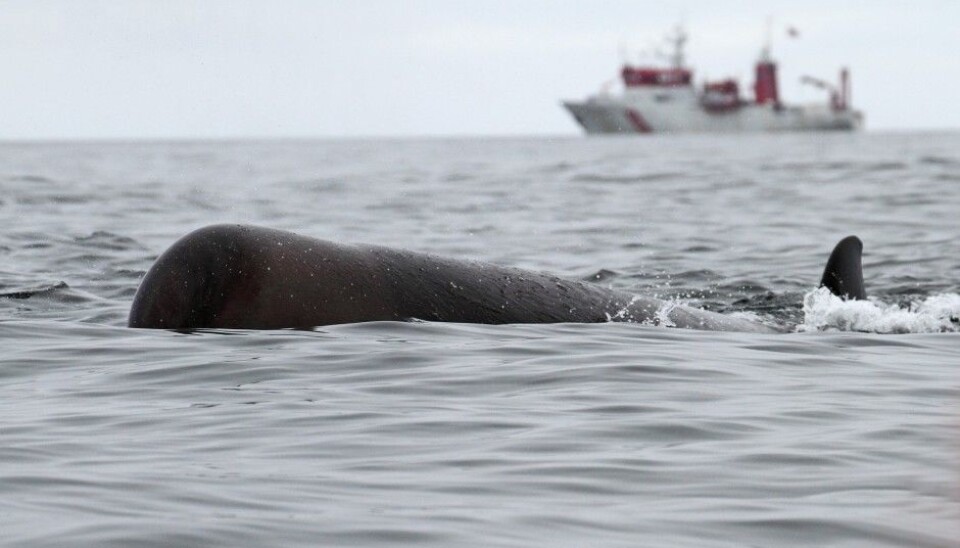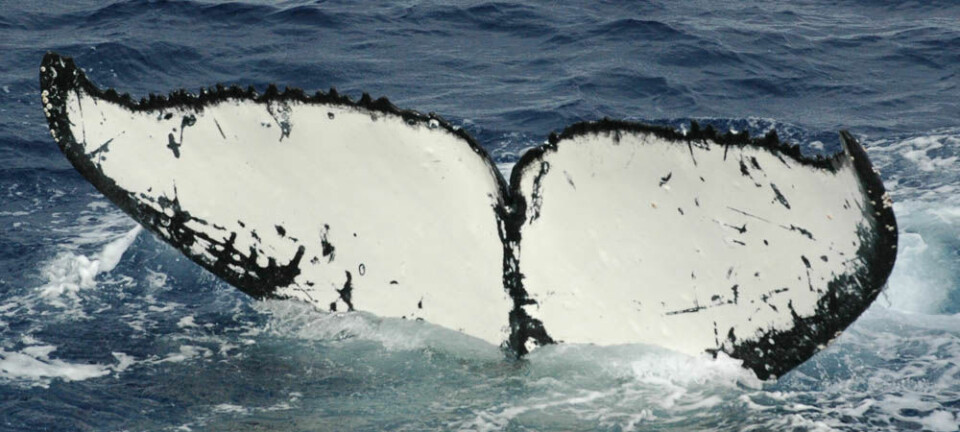An article from Norwegian Defence Research Establishment

How much man made noise can the marine environment withstand?
The marine environment is not as quiet as it used to be. And humans are to blame. How does this affect animals living in the ocean?
Picture the soothing sound of whales singing. Some find it relaxing. Well – if you add some engines roaring and a couple of explosions, the picture changes somewhat. Perhaps the whale feels the same way.
A new Norwegian report looks at the consequences of man-made noise on marine life.
"The amount of background noise in the ocean is increasing. This can affect how marine animals communicate, feed and navigate," according to Peter H. Kvadsheim, one of the scientists behind the report.
In addition to changing animal behavior, sound impulses from seismic activity, military sonars (see background information below) and detonations can cause direct damage to animals.
The search for oil is affecting animals
The northern environment is particularly vulnerable. In these oceans you find a higher density of marine mammals, and animal life varies with the seasons. The Norwegian petroleum-industry is increasing its activity in these waters.
"In the north seismic surveys and noise come on top of climate change and other human effects on the environment," Kvadsheim says.
We need to explore the consequences
According to international environmental-agreements, Norway is obligated to report and manage noise pollution in a justifiable manner. The report identifies that further research is needed to understand the implications of man-made noise.
"We still have little knowledge on the long term effects of noise and other stress-factors, and how they affect vulnerable species," Kvadsheim underlines.
Whales with hearing loss?
The fact that animal life can get hurt when old mines are detonated, or when explosives are used in underwater construction, goes without saying. The scientists behind the report think that risk-assessment has been deficient in this area. This needs to be improved to avoid damaging local populations of fish, sea mammals and invertebrates.
Seismic activity and military sonars can cause direct damage to sea life up to a couple of hundred meters from the source. The hearing organ is particularly sensitive. But scientists do not believe that sonar activity will affect the populations of species in a significant manner.
Noise changes behavior
It is thoroughly documented that sonar sound-waves affect behavioral patterns amongst sea mammals. How behavior is affected varies from species to species.
"Sounds-waves can cause a whale to flee when it is feeding, resting, communicating with others or looking after its offspring. But we don’t know the long term effect this has on the population," says Kvadsheim.
Fish are less sensitive to sonars, probably because the frequency is outside their hearing range.
Shocking waves
The effects of seismic activity – shockwaves used to map geology below the seabed – are not as thoroughly documented, even though seismology is more frequently used. The existing research has been carried out on humpback whales and sperm whales – less sensitive species.
"We know that the porpoise and the bowhead whale avoid areas with seismic activity. In several species of baleen whales, seismic activity is proven to disturb communication. We still know little about the consequences, but from how mammals react to other sound-sources, we can assume that seismic activity in certain situations changes a species behavior in such an extent that it affects the population," Kvadsheim claims.
Studies show that even fish change behavior in areas with seismic activity. This may affect the fishing industry, but we need more research to consider the extent of such effects.
"What species are the most vulnerable?"
"The beaked whale appears to be especially vulnerable. Studies have revealed extreme diving-behavior when the beaked whale is exposed to signals from military sonars. This may increase the risk of stranding," Kvadsheim explains.
Recently a goose-beaked whale stranded on Sotra, an island just outside the city of Bergen on the Norwegian west coast. Its stomach was filled with plastic bags. The goose-beaked whale grazes at great depths and lives far offshore. This particular species has never before been documented to swim in Norwegian waters
The days prior to the stranding, a seismic survey was conducted north-west of Sotra, Kvadsheim says,
"Do you think the seismic activity scared the whale, causing it to swim 100 kilometers to the shore?"
"We really can’t say for sure. This individual may have been emaciated due to the plastic in its stomach, but that does not necessarily explain why an animal living offshore was found on Sotra. It is noteworthy that a seismic survey was conducted in the area the whale propably came from. This illustrates the need for more knowledge on how man made noise, alone or in combination with other factors, affects life in the ocean," Kvadsheim says.
May affect the entire food chain
Stranding octopuses is a far less common phenomenon, but this has been documented after seismic surveys.
Both krill and octopus are essential prey for whales and fish. If man made noise has a negative effect on such species, it may propagate upwards in the eco-system. However – according to the report there is generally little knowledge about the effects of manmade noise on invertebrades.
The report Kvadsheim and his colleagues has been working on, “Effects of man-made noise in a marine environment” was commissioned by the Norwegian ministry of climate and environment. Norwegian authorities will now consider measures to limit or prevent damage from manmade noise at sea.
------------------------------
Reflection seismology
A method of exploring geophysics. When you send shockwaves into the ground, a part of the wave is reflected when it hits a new geological layer. This information can be used to create a detailed map of the geology in an area. The method is used when trying to detect reservoirs of petroleum or gas in the ground. In seismic surveys at sea, 4.000 to 10.000 meter long cables are dragged behind a ship. These cables release high pressured air. This creates a shock-wave. The echo from this wave is used to create a map of the geology beneath the seabed.
Sonar
Sonar (originally an acronym for SOund Navigation And Ranging) is a technique that uses underwater sound propagation to navigate, communicate, or detect objects on or under the surface of the water. Passive sonar is simply listening to the sound made by other objects. Active sonar is sending different sound-waves, listening for echoes from the sound-waves hitting different objects. The method is used by fishing-vessels to detect shoals of fish, and by naval vessels to detect submarines.
































